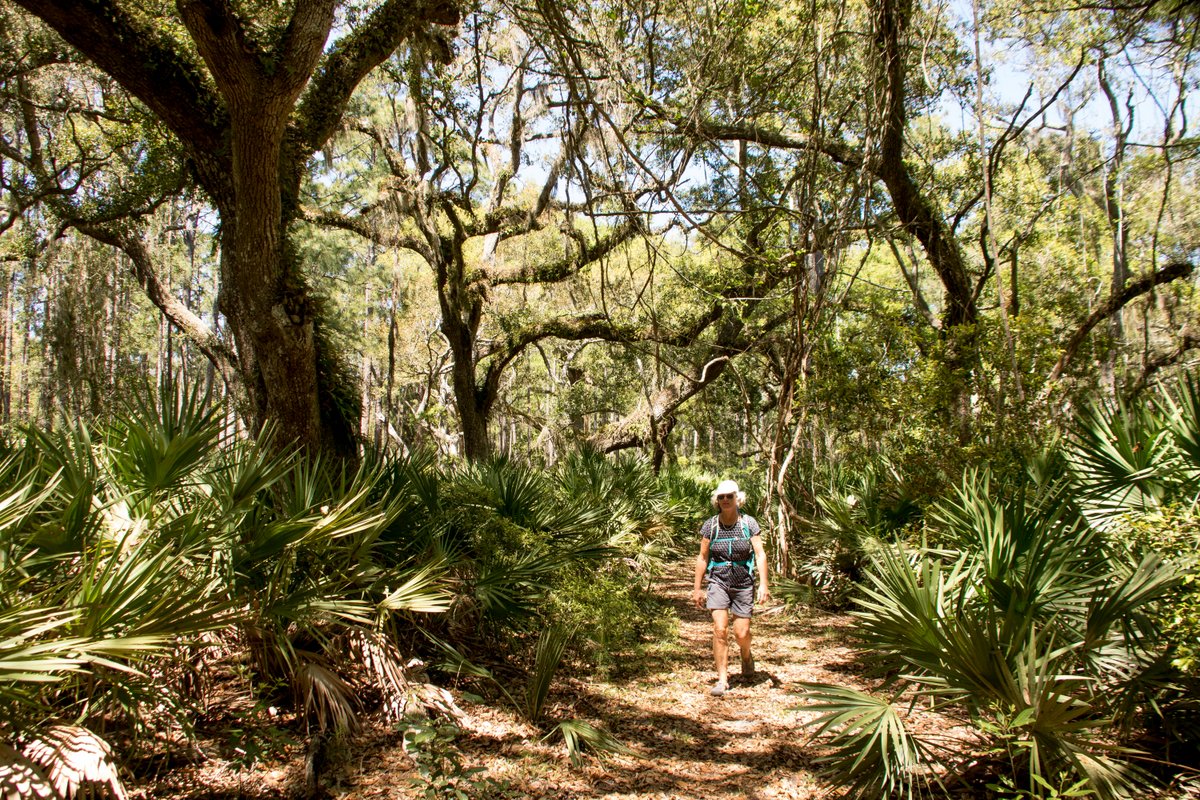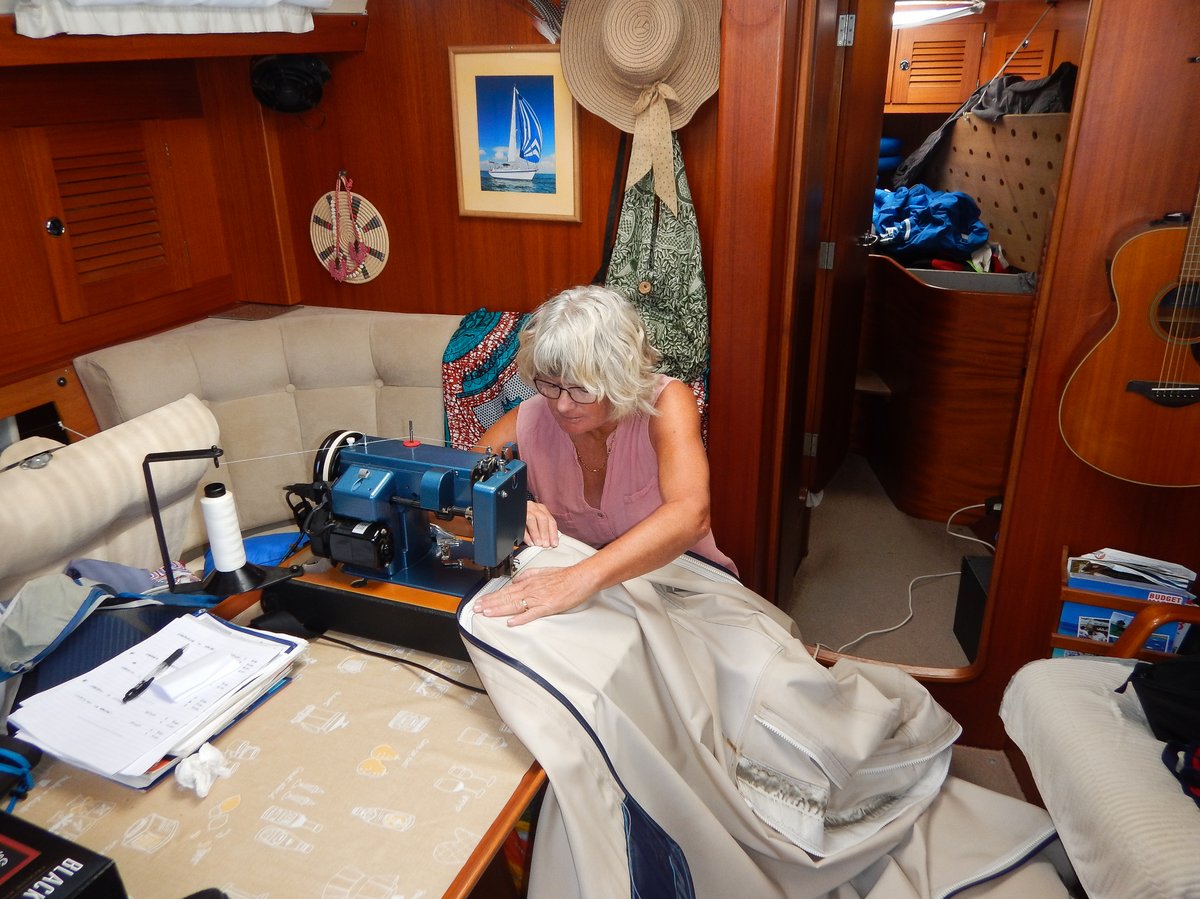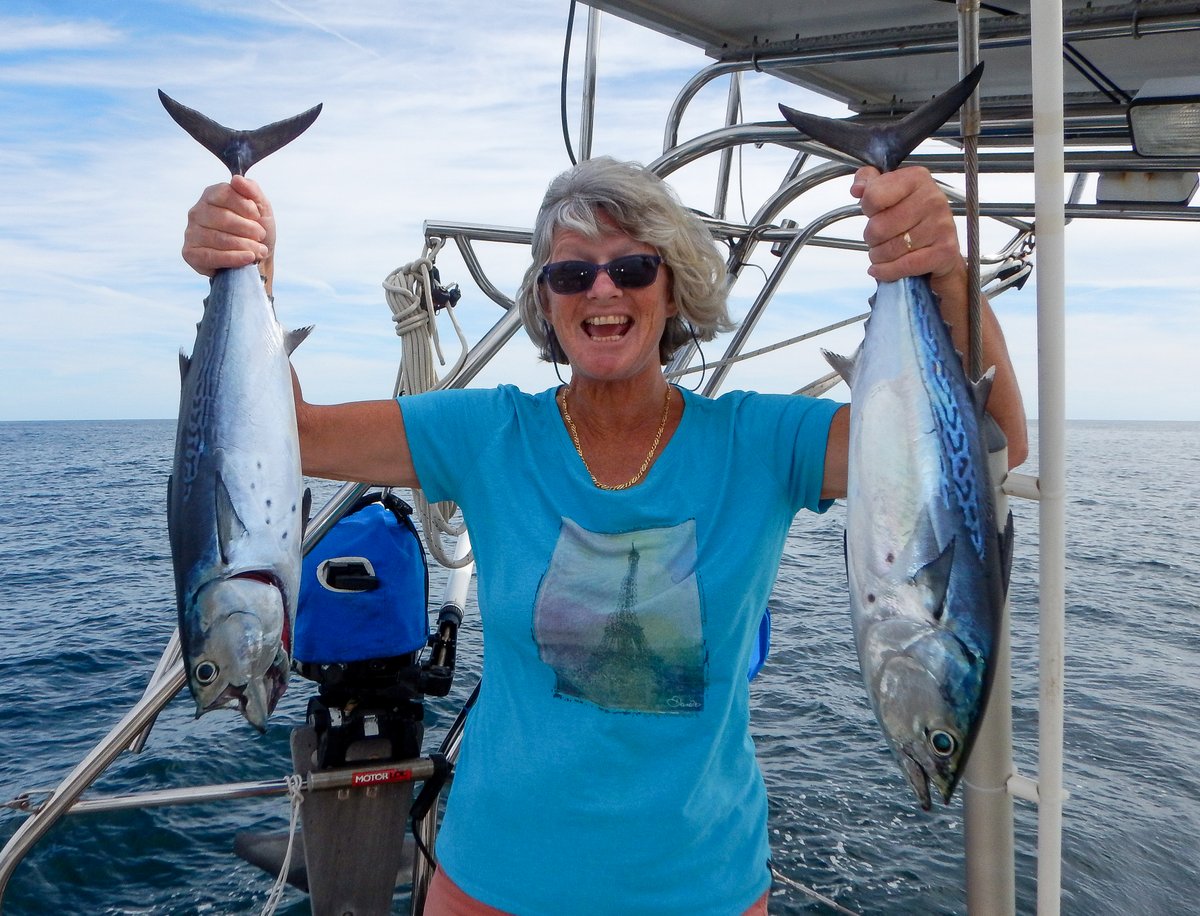15 April 2019 Cumberland Island, Georgia
It was very cold last night (about 15°C) with a brisk 20 knot SW wind, which is sucking cold air from the central states of the USA – we had to put on fleeces while having breakfast and the hot cup of tea was very welcome. However, it was sunny and the forecast still looks like we’ll have a weather window to leave for Charleston on Wednesday 17th.
After breakfast, Glenys made some bread, while I tackled a problem on the front toilet. The pump wasn’t sucking in any sea water to flush the toilet, so I removed the pump to find a small ½” crab jammed under one of the valves. I pulled the (dead) crab out and voila! a working toilet – you don’t have these problems when living in a house.
We went ashore and hiked north up the beach on the Atlantic side of the island which was very sheltered from the SW wind. There were a surprising number of Horseshoe Crab carcasses along the high tide water line. These strange creatures grow to be 20” diameter and are more closely related to spiders than true crabs. They crawl around the seabed searching for worms and molluscs, which are their main food. Horseshoe Crabs lay and fertilise eggs at the high-tide waterline and about 10% of the population dies when rough surf flips them onto their backs, a position from which they often cannot right themselves.
After walking a few miles along the beach, we headed inland and continued walking north along a narrow path through the Maritime Forest beneath the thousands of Live Oak trees. A number of campsites are hidden away beneath the trees and seem to be very popular with backpackers. We were only able to get halfway up the island before we turned around and headed back to the boat – a pleasant 10 mile hike.
16 April 2019 Cumberland Island, Georgia
We woke to blue skies again. It was chilly in the morning, but not as bad as yesterday because the wind was only 10 knots from the north-east pulling in air from the warmer Atlantic Ocean. The forecast is still showing SE 10-15 tomorrow, increasing to S 15-20 overnight, so we’ll be heading to Charleston tomorrow. The next front arrives at the coast on Friday 19th, so we have over 48 hours to sail the 160 miles.
The next front looks like another strong one, with forecast gusts over 45 knots on Friday night, so we’ve booked ourselves into a marina for two nights. It’s going to cost $80US per night, but we’ll be able to explore Charleston city instead of worrying about the storm front.
We pottered about on the boat all day. Glenys spent most of the day slaving away on her sewing machine, reinforcing and patching the bimini, the side panels and the dinghy cover. I went up the mast and replaced our VHF antenna – we won’t be going under any bridges until we get to Beaufort. After Glenys had finished the repairs to the dinghy cover, I lashed the dinghy onto the front deck and prepared to go sailing tomorrow.
I checked the engine and the damn water pump still has a very slight leak. It must be the slight groove in the shaft causing the leak, so there’s not a lot I can do about it at the moment. I’ll just have to keep a very close eye on the pump and hope that it lasts until we get to Annapolis – we’ll probably be motoring for 100 hours, but I think that we’ll be okay.
I did some research on my options. I could buy a new pump for a staggering $600US; or buy a new shaft for $250US; or I can buy a SKF Speedi Sleeve and a new seal for $25US. The Speedi Sleeve is a very thin tube which is an interference fit on a shaft, covering any grooves in the shaft, providing a smooth sealing surface. The sleeve is made from hardened stainless steel, so I think that it is a strong repair, but I need to investigate further.
17 April 2019 Cumberland Island to Charleston, South Carolina (Day 1)
The anchorage at dawn was like a mill pond. We pulled up the anchor just after 07:00 and motored the 5 miles to the inlet. There was a very light east wind, putting us very close hauled on starboard tack, but not enough wind to sail. We motor-sailed all day, hoping and waiting for the wind to increase and veer to the south-east. Fortunately, the seawater pump is behaving itself.
In the morning, I hooked and landed a small mackerel, which we had for lunch. As usual on our watches, I slept for a couple of hours in the afternoon, waking to find that Glenys had landed two very nice Bonito Tuna. I gutted and filleted them and Glenys packed them in zip lock bags in the fridge. She’d already made a stew for today’s dinner, so the fish will have to wait.
At 18:00, as we were having dinner, the wind finally picked up enough to sail. We were still hard on the wind, but in the very calm seas it was a pleasure. As the sun set, the skies were overcast, but mostly stratus clouds - nothing to be worried about. There was a full moon, so it was a glorious night. Our route is taking us 25 miles off shore, but the water is surprisingly shallow at 20-30 metres. During my 7-10 watch, I was amazed to pass a 335 metre long cargo ship at anchor, 23 miles offshore.
Yesterday, while reviewing the weather forecast, I’d looked up a forecast for the currents along this coast. The strong Gulf Stream is 40-50 miles offshore in this area, so it is of little help. The forecast was showing a 0.4 – 1.0 knot counter-current along our route, so I considered taking a longer route to try to avoid the worst of it, but eventually decided to sail the rhumb-line and take my chances. I’m glad that I did because the worst we saw was 0.5 knots against us and most of the way we had a slightly favourable current.
The wind dropped at our 22:00 watch change, so it was back to motor-sailing for a few hours and then Glenys managed to sail for a couple of hours on her 4-7 watch.
- Prev
- Next >>










